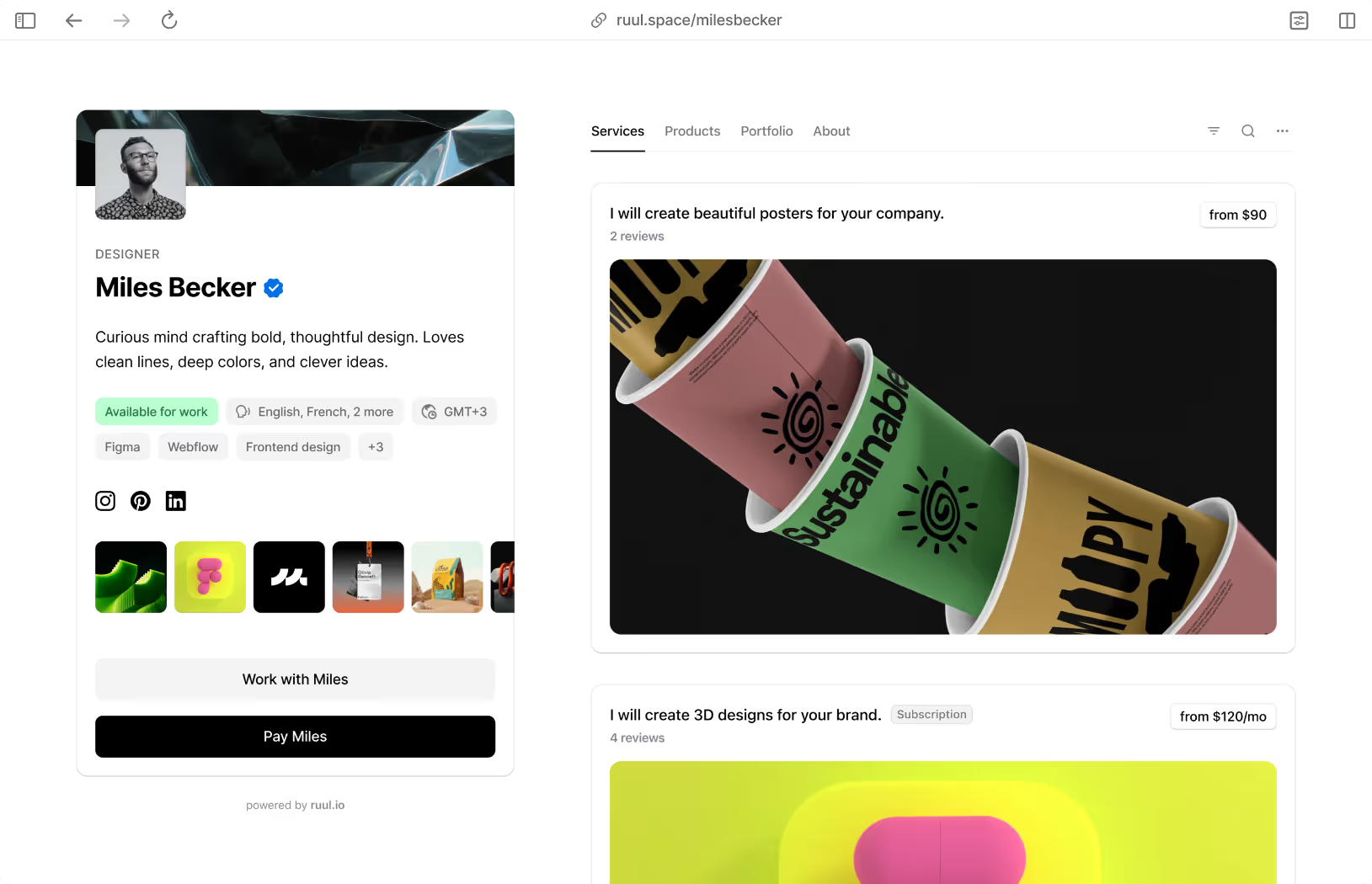13 Best Fiverr Alternatives Freelancers Need to Know


Get clear, straightforward answers to the most common questions about using Ruul.
Ruul is a merchant-of-record platform helping freelancers and creators globally sell services, digital products, subscriptions, and easily get paid.
Ruul is designed for freelancers, creators, and independent professionals who want a simple way to sell online and get paid globally.
Open an account, complete a quick verification (KYC), and link your payout account. Then, start selling through your store or send payment requests to customers instantly.
Signing up is free. There are no subscription or hidden fees. Ruul charges a small commission only when you sell or get paid through the platform.
A merchant of record is the legal seller responsible for processing payments, handling taxes, and managing compliance for each transaction.
You can sell services, digital products, license keys, online courses, subscriptions, and digital memberships.
Add your preferred bank account, digital wallet, or receive payouts in stablecoins as crypto. Funds arrive within 24 hours after a payout is triggered.
